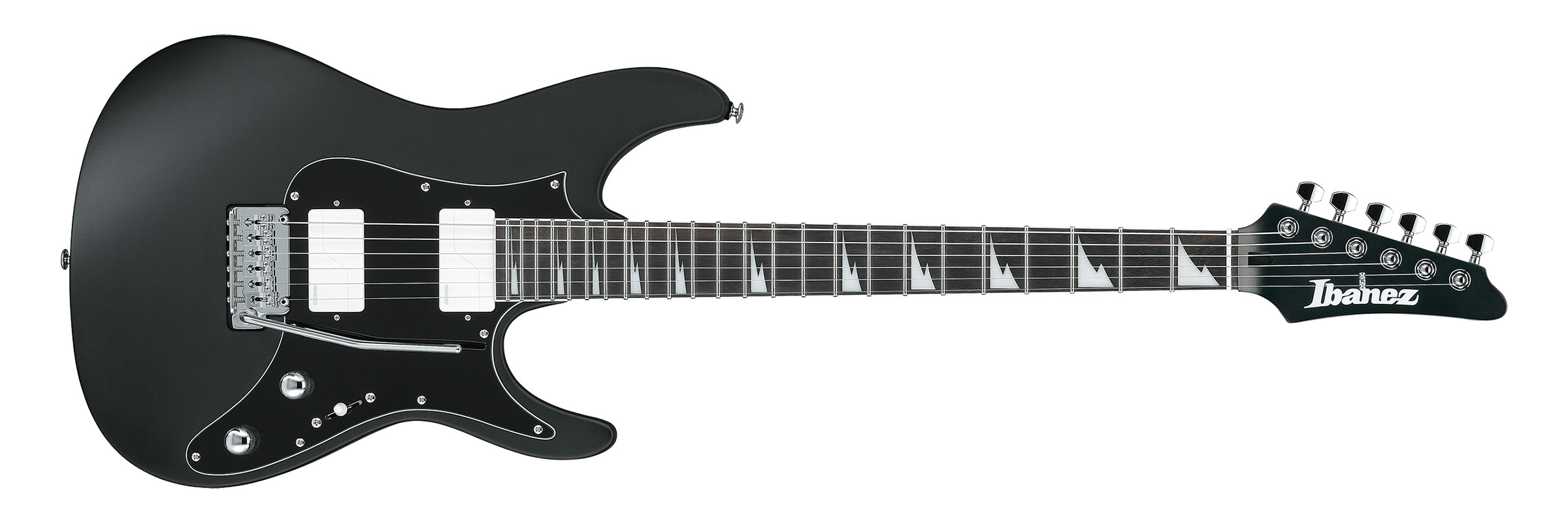“I grew up with the myth, the thinner the neck, the faster you can play. For me, that didn't work”: Bernth on why thinner necks don’t always result in speedier soloing – and how switching helped improve his playing

When it comes to the electric guitar, there are a few widely accepted schools of thought that have influenced the way many brands – and players – approach the instrument. One of the most obvious is concerned with neck profiles.
Namely, conventional wisdom dictates that the thinner the neck, the quicker it is to navigate, and thus the faster you play. However, Bernth – one of today’s most prolific prog guitar players – has flown in the face of that accepted norm for his new signature guitar, because he says such speak is a “myth”.
Last month, Bernth unveiled his first-ever signature guitar, the Ibanez BER10, which was specifically engineered to help guitarists play faster. One of the key specs that was included to help achieve that goal was the neck profile.
However, unlike most ‘shred’ guitars, which often try to make their necks as thin as humanly possible, the BER10 went for a thicker Oval C shape. That was something specifically chosen by Bernth.
Speaking to Guitar World shortly after the BER10’s unveiling at Guitar Summit 2025, Bernth explained his rationale for the key specs, including the thicker-than-usual neck profile.
A post shared by Guitar World (@guitarworldmagazine)
A photo posted by on
“The last cool thing I wanted to quickly talk about is the neck profile,” he says. “I don't know if you can see it, but it's an Oval C neck, which is the best neck for me to support my fingers.
“I grew up with the myth, the thinner the neck, the faster you can play,” Bernth explains. “Turns out for me, that didn't work, because I was pressing way too hard with my fretting fingers when I didn't have anything to grab onto.
All the latest guitar news, interviews, lessons, reviews, deals and more, direct to your inbox!
“As soon as I started playing necks that are a little bit thicker, I got more control out of my fingers for legato or also for any kind of stretching stuff. So that's the neck that works the best for me.”
The neck profile is but one of many key specs found on the BER10, which Bernth cites as his dream guitar. Another is the control layout, which is different from what you’d usually find on an AZ-style Ibanez.

“I played their AZ models and I absolutely loved them, but one thing about a lot of the guitars, which is not an issue for every guitar player, but for me specifically, is that I used to bump into the knobs,” he explains.
“They're placed right below the pickups, which makes sense in theory, because you can turn on and off the guitar quite quickly. But for me, since I follow the strings with sweep picking, for example, or also with alternate picking runs, I always used to bump into the volume knob.
“For this guitar, I could convince them to move the knobs further back. When I follow the strings, keeping my palm on the bridge like this, I don't bump into the knobs anymore. That's a pretty big game-changer for me. Small detail for some people. For me, it's a life changing thing with this guitar.”
Head over to Ibanez for more info on the BER10.

Matt is the GuitarWorld.com News Editor, and has been writing and editing for the site for five years. He has a Masters in the guitar, a degree in history, and has spent the last 19 years playing everything from blues and jazz to indie and pop. During his GW career, he’s interviewed Peter Frampton, Zakk Wylde, Tosin Abasi, Matteo Mancuso and more, and has profiled the CEOs of Guitar Center and Fender.
When he’s not combining his passion for writing and music during his day job, Matt performs with indie rock duo Esme Emerson, and has previously opened for the likes of Ed Sheeran, Keane, Japanese House and Good Neighbours.
You must confirm your public display name before commenting
Please logout and then login again, you will then be prompted to enter your display name.
